Years of service 1960–1979 | Name Saiful Azam Rank Group captain | |
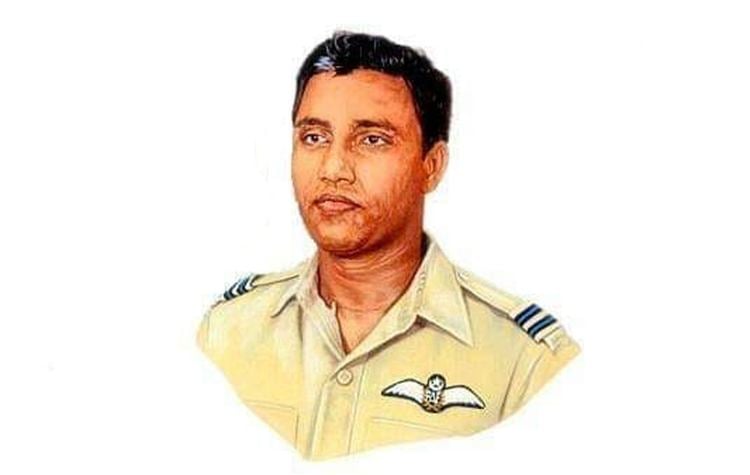 | ||
Service/branch Similar Muhammad Mahmood Alam , Ernst Udet , Erich Hartmann Born 1941 (age 79 years), Pabna District, Bangladesh Died 14 June 2020 (aged 78-79) CMH, Dhaka, Bangladesh | ||
Saiful Azam (born 1941) was a retired Pakistani/Bangladeshi air force officer, who served as a fighter pilot with the Pakistan Air Force (PAF) (1960-1971) and the Bangladesh Air Force (BAF) (1971-1979).
Contents
- Ace Pilot Group Captain Saiful Azam on Air Commodore M M Alam of PAF
- Personal life and education
- Service with the Pakistan Air Force 1960 1971
- Service with the Bangladesh Air Force 1971 1979
- Post Retirement 1979 present
- Career achievements
- References
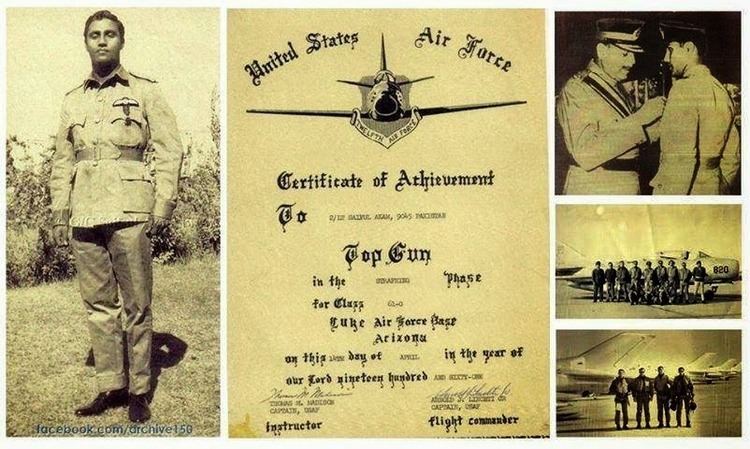
Ace Pilot Group Captain Saiful Azam on Air Commodore M M Alam of PAF
Personal life and education
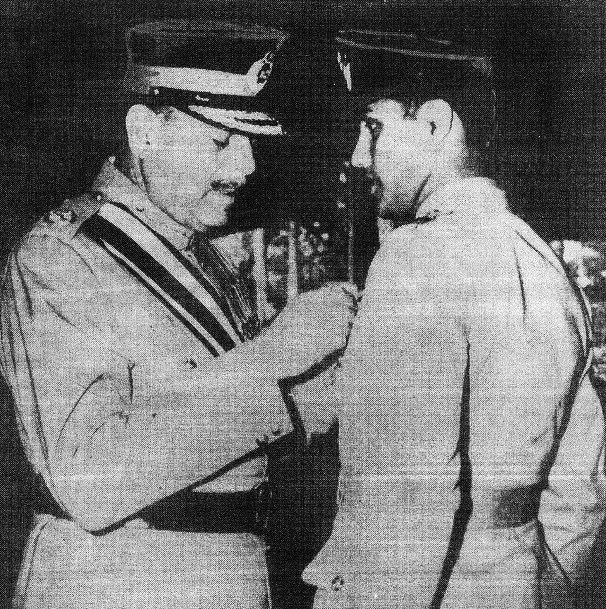
Azam was born in Khagarbaria village, Pabna District, East Bengal (later East Pakistan and now Bangladesh) in 1941. After completing his secondary schooling in then East Pakistan, he migrated to West Pakistan in 1956, before joining the Pakistan Air Force Academy, Risalpur in 1958, successfully gaining commission as an officer in the PAF's General Duties Pilot (GDP) branch in 1960.
Service with the Pakistan Air Force (1960-1971)
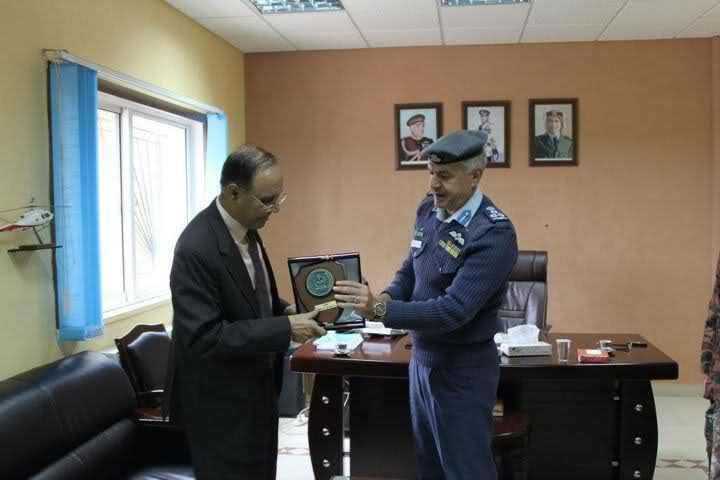
After training with the Cessna T-37 aircraft and further education at Luke Air Force Base, Arizona with F-86 Sabres, in 1963, Azam was posted briefly in Dhaka before becoming an instructor with the T-33's at PAF's No. 2 Squadron (Jet Conversion Unit) in Mauripur, Karachi. While still posted as an instructor, Azam flew in the September 1965 war with India as part of PAF's No. 17 Squadron from PAF Base Sargodha, flying F-86s. After returning from a successful ground attack, Azam's group encountered Indian Folland Gnat interceptors; Azam shot down Flight Officer Mayadev of the Indian Air Force. Azam was awarded the Sitara-e-Jurat, Pakistan's third highest military award. In 1966, he assumed the command of PAF's No. 2 Squadron.
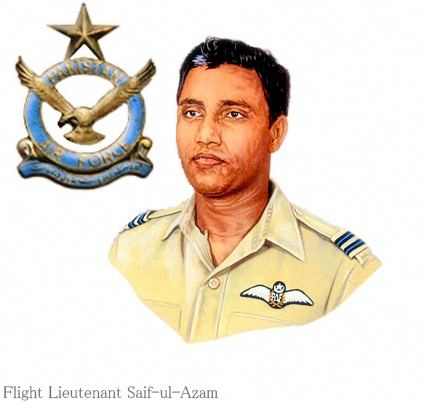
In November 1966, he was sent by the PAF on deputation as an adviser to the Royal Jordanian Air Force. He was one of the two Pakistani Air Force officers deputized, along with Flight Lieutenant Muhammad Sarwar Shad. When the Six-Day War broke out in 1967 he flew a Hawker Hunter of the No. 1 squadron for the Royal Jordanian Air Force. Over a two-day period, Azam was involved in attacks at two different bases, for which he received Jordan's Order of Istiqlal and Iraq's medal of bravery, the Nut al-Shujat. On June 5, 1967, he was called to defend Jordan's main base at Mafraq from the Israeli Air Force's Dassault Super Mystère aircraft. One of four Hunters flown by Pakistanis, Azam shot down 2 Israeli fighter and damaged another. On June 6, 1967, he was transferred to the Iraqi Air Force and was in western Iraq when four Israeli Vatour bombers escorted by two Mirage fighters attacked the airbase. One Mirage pilot, Captain Gideon Dror, shot down one Iraqi fighter including Azam's wingman, but was in turn shot down by Azam. Azam also shot down a Vatour bomber flown by Captain Golan. Both of them were taken as prisoners of war.
In 1969, after completing his overseas deputation, he returned in service to the PAF and spent several years as flight commander at various PAF bases before the Independence of Bangladesh in 1971.
Service with the Bangladesh Air Force (1971-1979)
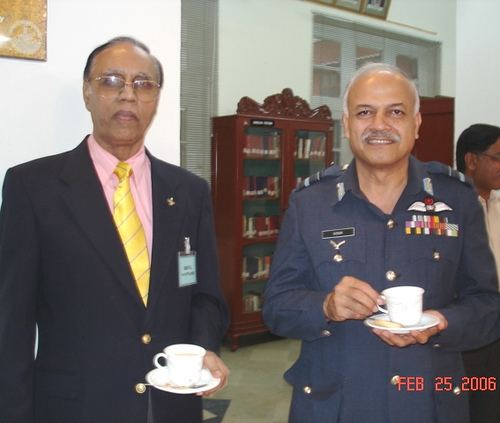
Azam entered service with the newly-formed Bangladesh Air Force after the independence of Bangladesh, serving as Director of Flight Safety and Director of Operations before being given command of the Dhaka Air Base and promoted to Group Captain in 1977. He retired in 1979 as Group Captain.
Post-Retirement (1979-present)
After retirement, Azam served in the following appointments:
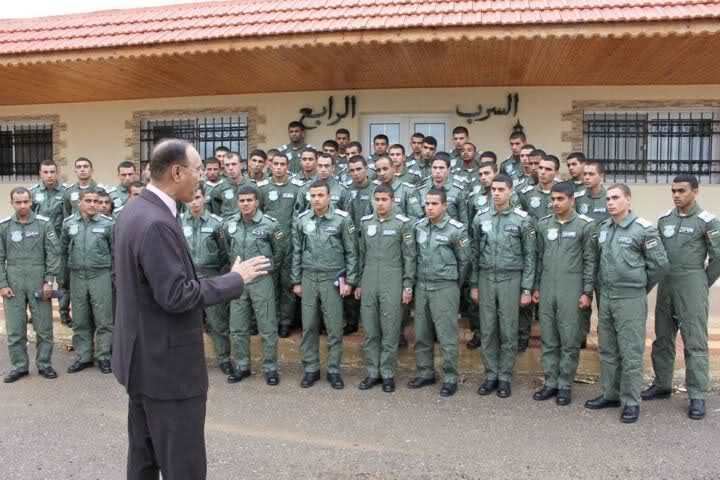
Subsequently, he entered private business as Managing Director of Natasha Trading Agency and as the director of a travel agency with his wife.
He now lives in retirement in the United States.
Career achievements
Saiful Azam remains the only fighter pilot who has flown for four air forces (Bangladesh, Jordan, Iraq and Pakistan) at war, along with the distinction of having kills against two different air forces (India and Israel). As of 2012, according to the Pakistan government, he holds the record for shooting down more Israeli aircraft than any other pilot.
